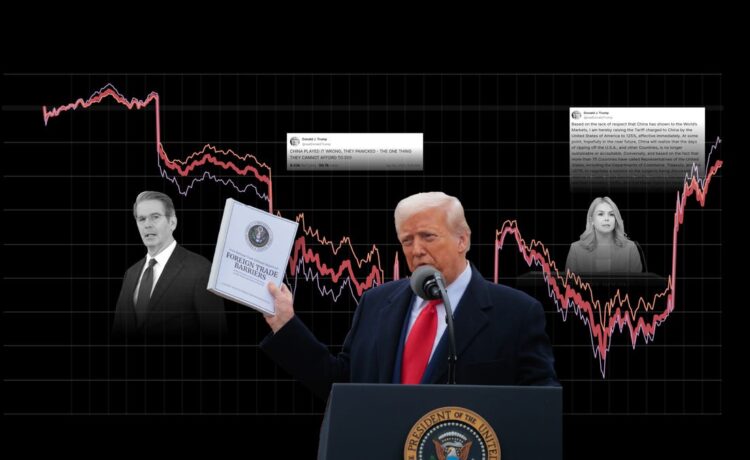The U.S. stock market surged Wednesday, then sagged Thursday following President Donald Trump‘s announcement that he was pausing tariffs for 90 days to more than 75 U.S. trading partners except for China, whose tariff rate was ultimately increased to 145%.
U.S. markets initially reacted favorably, rising in afternoon trading before falling Thursday morning. The Dow lost more than 1,000 points as investors worried about a trade war with China.
Trump’s decision Wednesday was the latest is a series of market-wrenching moves that have taken place since the president announced a series of tariffs on April 2. Stock market declines and a sell-off in U.S. bonds sparked some fears that the U.S. might be headed for a recession.
Tariffs are a form of taxes imposed on imports from another country. Tariffs are paid by U.S. companies that import the goods. Trump has said tariffs are needed to reduce the U.S. trade deficit with other nations.
How S&P 500 performed during tariff days
Can’t see our graphics? Click here.
April 2
Trump imposes a minimum baseline 10% tariff on all nations that import goods into the U.S. Some of the nations will face higher tariffs, including China at 54%.
April 3
Trump’s 25% tariff on autos manufactured outside the U.S. take effect.
April 4
China says it will impose a 34% tariff on imports of all U.S. products starting April 10.
April 5
Trump’s previously announced tariffs of 10% on specified countries go into effect.
April 7
Trump threatens to levy an additional 50% tariff on China.
April 8
White House press secretary Karoline Leavitt tells reporters the full package of more than 100% in levies will kick in overnight. “It was a mistake for China to retaliate,” she says.
April 9
The additional tariffs announced by Trump on April 2 take effect, with tariffs on China now at 104%. China retaliates by increasing its tariffs on U.S. products to 84% from 34%, starting April 10.
Trump announces he is pausing reciprocal tariffs for 90 days while increasing China’s tariff to 125%.
Trump’s statement came after China said it would raise its tariff on U.S. goods to 84% after hefty new tariffs on its goods took effect at 12:01 a.m. ET on Wednesday.
April 10
As stocks continued to fluctuate, the U.S. tariff rate on Chinese imports now effectively totals 145%, a White House official confirmed to CNBC.
Trump’s latest executive order hikes tariffs on Chinese goods to 125% from 84%, but that is on top of a 20% fentanyl-related tariff that Trump previously imposed on China. The earlier 20% levy means the total tariff is 145%, USA TODAY reported.
The European Commission, which represents the European Union, approved a set of tariffs to start April 15, calling U.S. tariffs “unjustified and damaging, causing economic harm to both sides, as well as the global economy.”
CONTRIBUTING Medora Lee, Andrea Riquier, Susan Miller, John Bacon, Jorge L. Ortiz, Francesca Chambers, Phillip M. Bailey and Joey Garrison, USA TODAY
SOURCE USA TODAY Network reporting and research; Reuters





